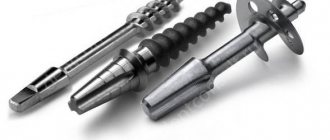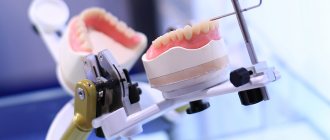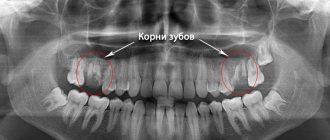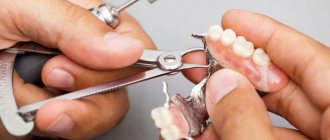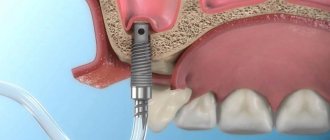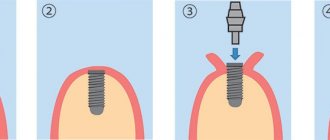Dentists joke that God gives teeth to a person for free twice, but you have to pay for the third. Teeth are not capable of self-healing. Losing even one is not as harmless as it may seem. In addition to aesthetic discomfort, facial features change, chewing function and digestion are disrupted. Dental implantation comes to the rescue - you can return a beautiful smile quickly and forever. Akhmedkhanov Said Rashidovich talks about all the nuances of dental restoration with implants.
How did dental implants come about?
Actors who win an Oscar usually thank God and their parents. People who, with the help of implantation, regain their teeth and a comfortable lifestyle, should remember the Swedish professor Per-Ingvar Brånemark with a kind word. Quite by accident, he revolutionized dentistry.
In 1965, Branemark conducted research with a group of scientists. The professor implanted a titanium capsule into the rabbit and was very surprised when he could not remove it. So a happy accident helped to establish that titanium fuses with bone. Branemark decided to use the discovery in dental prosthetics.
The first lucky person with titanium implants is Gust Larsson. A simple carpenter, like Professor Branemark, went down in the history of implantology. Larsson, 34, had a completely toothless mouth. Not life, but torment: eating, talking, smiling - everything is difficult. The man himself found Branemark, having accidentally learned about his experiments. There was nothing left to risk, and Larsson became the first person in the world to receive implants. The patient lived with them for more than 40 years, until his death, proving the effectiveness and reliability of the new method.
The first experiment was successful, but the patient Brånemark was in no hurry to declare a revolution in dentistry. The scientist spoke publicly about his discovery 20 years later. The message caused a sensation! An accidental discovery turned the world of prosthetics upside down and returned a comfortable lifestyle to toothless patients.
What is dental implantation?
Dental implantation is the implantation of an artificial root into the upper or lower jaw. The implant is titanium and therefore completely biocompatible. This reliable crown support consists of:
- titanium screw (implanted into the jaw during surgery);
- abutment (attaches to the implant, resembles a ground tooth).
The answer to the question of whether to undergo dental implantation is clear: of course, yes. Today this is the most advanced method of prosthetics.
What complications may arise?
- Postoperative bleeding.
- Swelling of the gums.
- Seams coming apart.
- Failure to achieve primary stability of the implant.
- Paresthesia (loss of sensation in the area of implantation)
- Exposure of the implant.
- Peri-implantitis.
- Rejection of the artificial root.
Work examples
How often do you visit the dentist?
Photos before and after dental implantation
Surgery in the lateral part of the chewing teeth, in the area of the front teeth and with complete edentia.
Leading implant manufacturers
- Nobel Biocare (USA)
- Straumann (Switzerland)
- Astra Tech (Sweden)
- Alpha Bio (Israel)
- Ankylos (Germany)
- NDI Medical (Germany)
Why are molars destroyed? What problems should you pay attention to?
The destruction of large molars can be associated with a number of problems:
- Caries
. The remote location of teeth makes it difficult to care for, and plaque often remains on the surface of their enamel - an excellent breeding ground for bacteria that destroy tissue. Untimely treatment leads to pulpitis, periodontitis, and the tooth must be removed. - Cyst/granuloma
. Cysts and granulomas may appear on the roots of chewing teeth. These are small formations that, if infected, can cause tooth loss. - Periodontal diseases
. The inflammatory process causes a weakening of the ligamentous apparatus that holds the tooth root in the bone, and it begins to loosen and falls out. - Incorrect growth
. Sometimes a delay in the eruption of a molar leads to the displacement of the rest into the vacant space, and subsequently the tooth simply has nowhere to grow.
Often, one patient may experience the simultaneous presence of several negative factors. In this case, the likelihood of an end or included defect becoming higher.
Dental implantation methods
A variety of dental implantation methods allow you to choose the ideal option for each patient.
One-stage
For those who do not want to wait a long time and who have no contraindications, dentists offer one-stage implantation with immediate loading. The peculiarity of the method is that the temporary prosthesis and implant are fixed in one step. Only a small incision is made in the gum. The temporary crown is replaced with a permanent one after 3 to 5 months. During this time, the dental implant finally takes root.
Two-stage
Two-stage implantation is time-tested. The operation takes longer, but the risk of complications is minimal - the doctor clearly sees what he is operating on by making an incision in the gum and folding back the flap. The abutment is installed six months after the implant has been implanted, the crown – a week after the abutment. This is a classic dental implantation, proposed by Professor Branemark.
One-step
Single-stage - implantation takes place simultaneously with tooth extraction. This is an ideal option for front teeth, when the aesthetic result comes to the fore. This technique is rarely used for chewing teeth.
Our clinics
Clinic "Elident" on Varshavskaya
Varshavskoe highway, 75, bldg. 1, Moscow 117556
- Varshavskaya (500 m, closed until 2021)
- Nakhimovsky Prospekt (1,300 m)
Mon-Sat : 09:00-21:00; Sun : 09:00-19:00.
Online registration
+7 (495) 649-41-19
Elident Clinic in Annino
Varshavskoe highway, 154, building 1, Moscow 117405
- Annino (500 m)
- Academician Yangelya (700 m)
Mon-Sat : 09:00-21:00; Sun : 09:00-19:00.
Online registration
+7 (495) 649-41-19
AnyRidge - the best Korean implants
When studying the problem of which implants are best placed, one cannot fail to mention the AnyRidge system. Such dental implants are among the best products in the economy segment, as they have the following positive characteristics:
- Advanced Xpeed coating. When developing such a coating, calcium ions are used, due to which it is possible to significantly accelerate the rate of implant integration;
- Excellent strength indicators. The production process of the above dental systems involves pure titanium, which ensures their unsurpassed quality, excellent stabilization performance and the necessary compatibility with the body;
- Reliable contact with the transition element. In this case, the possibility of loosening of the prosthetic devices and loosening of the fastening screw is eliminated, which is facilitated by the use of a five-degree connection;
- Application of Knife Thread. The cone-shaped design allows for optimal chewing pressure;
- Increased comfort during fixation. During surgery, only one drill is used, due to which it is possible to reduce the degree of tissue trauma and significantly reduce the cost of the dental restoration procedure;
- Expanded surface. This ensures high-quality fixation of implants of various sizes. At the same time, there is no need to implement osteoplastic procedures;
- Perfection of aesthetic parameters. They are famous for their impeccable aesthetics, corresponding to natural analogues;
- Possibility of use in difficult cases. Universality of use is achieved thanks to a wide range of sizes of prosthetic devices.
Taking into account the above advantages, we can draw a clear conclusion to the question: “Which implants are better to install?” The manufacturer AnyRidge produces dental systems that are distinguished by their versatility in use, improved aesthetic characteristics and decent functional parameters.
Swedish implants Astra Tech
The key advantage of Astra Tech implants is their high degree of osseointegration. For this manufacturer, this parameter reaches almost 99%, which is facilitated by a clearly organized production process and the active use of modern technological solutions. Based on the nuances described above, the following conclusions can be drawn:
- Astra Tech systems can be used for a wide variety of clinical situations;
- They have an optimal and gentle effect on the jaw bone;
- Impeccable aesthetics and excellent functional characteristics;
- Prolonged result. Answering the question: “Which company’s implants are better?”, we can confidently give preference to Astra Tech systems. According to patients, their service life reaches 18-20 years, and with proper care they have a lifetime guarantee.
Considering various dental implants and trying to answer the question of which ones are better, we can conclude that Astra Tech designs are the best choice. They have practically no “cons”. But some specialists prefer another implantation system for the reason that they are more accustomed to working with it.
Zimmer Trabecular Implants
In order to clearly decide which implant is best to place, you should first of all pay attention to the technologies used in its manufacture. The Zimmer system is manufactured using a unique technique that creates a spongy surface. This allows for mutual integration of the implant and bone tissue in a shortened period of time.
Also, the competitive abilities of these structures include:
- Expanded contact area with the jawbone;
- There is the possibility of implantation even with significant bone tissue resorption;
- Accelerated process of fixation of prosthetic devices, which is achieved due to a shortened period of osseointegration;
- The use of a unique tantalum material, which is absolutely safe for the human body;
- The presence of an improved connection between the structure and the transition element, which promotes extremely strong contact of the constituent components and eliminates the possibility of penetration of pathogenic microorganisms.
2. Nobel Biocare - excellent aesthetics with high stabilization
In the manufacture of Nobel Biocare systems, a vacuum casting method is used, which provides the necessary strength and, at the same time, allows for the creation of a lightweight design. In the manufacture of Nobel implants, improved technologies are used that contribute to an accelerated process of osseointegration, even when implementing a one-stage implantation technique. Thanks to the porous coating, the probability of rejection of the structure is equal to 0.7%.
In addition, the manufacturer Nobel Biocare pays close attention to its reputation: the entire production process is subject to strict quality control. The company provides a lifetime warranty on all manufactured products. In this case, each implant model is assigned its own serial number.
The only negative point when choosing Nobel systems is the impressive cost. But all costs are recouped due to the impeccable quality of the installed products and the lifetime period of their operation.
Straumann - the best implants in the world
When faced with the choice of which Swiss implants are better, every patient must understand that getting an ideal result when restoring missing teeth is possible only with the Strauman system. These dental implants have no analogues. They are considered completely safe for the human body, are famous for their unsurpassed quality and can be used for life. This is evidenced by both patients and practitioners.
In addition, Straumann provides a number of training programs for doctors. In turn, patients note the following positive aspects when using these dental implants:
- Accelerated osseointegration. Through the use of innovative developments and active research activities, it is possible to achieve almost 100% survival rate;
- The ability to obtain impeccable results even in the most complex clinical cases. Certain Straumann models can be fixed even in the absence of the required bone tissue dimensions, as well as in the presence of limiting factors: elevated glucose levels, inflammatory liver diseases and tobacco abuse;
- Shortened procedure period. By giving preference to the Straumann system, you can always be sure that the time required for dental restoration will be minimal.
Due to close and direct cooperation with this Swiss manufacturer, we are ready to perform the implantation procedure at the lowest cost in the capital. Moreover, our dentistry regularly holds promotions, and regular visitors are provided with impressive discounts on products of this brand.
Article expert (author):
Stages of dental implantation
- Before implantation. Dental implantation, like any other operation, requires careful preparation. The result depends on this. The doctor must plan the implantation procedure as accurately as possible and identify all possible contraindications. At the first appointment, the implantologist asks general questions about your health. Referrals for tests and consultations with other specialists are provided if necessary. The oral cavity must be healthy - without caries and inflammation of soft tissues. A few days before surgery, you need to make an appointment for a cleaning.
- Anesthesia.
As a rule, local anesthesia is used for implantation. Modern drugs completely relieve the patient of pain and discomfort. If necessary, sedation or anesthesia is used.
- Implant installation.
If the dental implantation process proceeds without surprises, according to a pre-drawn plan, the operation will take 20 – 40 minutes. First, the doctor will install the implant, then check the degree of primary stabilization, and then decide whether to load it with a crown or not.
- Fixation of the crown.
A temporary crown is fixed if the dental implant is firmly anchored in the bone. In case of problems with the primary stabilization of the implant, only a gum former will be installed. A permanent crown can be placed after the artificial root has completely engrafted, after 3 to 5 months. An abutment will be fixed to the implant, and a permanent crown will be placed on it.
Lab tests
The diagnostic stage before implantation necessarily includes a general and detailed blood test. This is a must for everyone. Certain categories of patients will need to provide the results of hormone tests (usually women) and other specific laboratory tests if there are concomitant pathologies.
A number of diseases are a relative contraindication for surgery to install implants, and then a preliminary consultation with a specialist is necessary. If necessary, before implantation, the condition is corrected to acceptable levels (for example, in the case of diabetes).
The price of sample collection services may vary and depends not only on the number of studies. Many tests are done in district clinics, and will be free if referred by a doctor. Thanks to this approach, diagnostic costs can be significantly reduced.
At the diagnostic stage, all patient data is collected, and based on the information obtained, the optimal method of dental implantation and type of implants are selected. After agreeing on the finished plan with the client, we begin to implement it. Next begins the stage of preparation for the implantation operation.
How long does the implantation procedure take?
Installation of one implant takes no more than 20 minutes. The artificial root takes from 3 to 5 months to take root. The entire period of treatment and recovery may take a year. The time frame is different for everyone, depending on the number of implants - some need to have 6 or more teeth implanted, others only need one. The duration of the process is affected by the volume and quality of bone tissue. The jaws also have peculiarities. On the bottom, the dental implant fuses with the bone faster, in 3–4 months, because the bone is denser. In the upper jaw, its volume is smaller, because of this the period of osseointegration is longer, 5 – 6 months. The end of implantation is the fixation of permanent crowns. Occurs after the implant has completely healed.
Life time
Initially unlimited. This means titanium rods can last a lifetime. Only the crown will be subject to periodic replacement. In order to reduce the cost, manufacturers come up with various materials in both directions: increasing, as well as decreasing, quality and cost.
The accuracy of the work done is an additional factor affecting the life of the pin. The distribution of chewing load, position in space, bite, normal jaw pressure and other factors that directly affect the service life depend on the correctness of the calculations.
Which option to choose depends on financial capabilities and specific recommendations of the doctor. You should always remember that the durability of any product depends on its care. If you take good care of the implant, following all the dentist’s recommendations, the pin will last a long time.
An implicit but important parameter influencing this indicator is cost. High-quality materials will cost more. However, strong components at the heart of such products are the key to long-term use and a quiet life.
The article discussed in detail the question: how a dental implant is inserted and screwed in, indications for having it implanted, types of operations with detailed explanations of their stages.
Types of implant-supported prostheses
Implant-supported dentures are securely attached to the jaw. There are several types of orthopedic structures. Your doctor will help you choose the right one.
- Fixed dentures.
Crowns are installed on the implants; in appearance, such teeth are no different from real ones. The method is suitable for the loss of one tooth or several in a row. - Bridge-like fixed prostheses.
A bridge instead of single crowns is an economical option for the patient. Used for an area with several missing teeth in a row. Minimum – 2 implants. - Removable dentures.
As a rule, they are used for complete edentia. Installation on an implant ensures that the prosthesis will not fall out of the mouth due to reliable fixation. At the same time, it is easy to remove it by unfastening the clasps. The patient chews easily, diction does not change, and there is no gag reflex. - Conditionally removable dentures.
They are very similar to removable dentures, but they cannot be removed without the help of a doctor. The prosthesis is secured not with locks, but with screws. The most common installation methods differ in the number of implants on which the structure is attached. There can be a minimum of three, four and six titanium roots.
Care instructions
Implantation of 1 tooth usually does not affect the patient’s lifestyle. Installation of several implants, and even with bone grafting, may cause slight swelling. The problem disappears 2 to 4 days after surgery. In order for the process of implant engraftment and restoration to be successful, you should listen to the doctor’s recommendations:
- At first, avoid too hot/cold food;
- chew on the side where there was no surgery;
- brush your teeth carefully;
- bathhouse, sauna – postpone;
- don't get too cold.
After bone tissue augmentation – sinus lift – there are more restrictions:
- do not fly on an airplane;
- don't dive;
- don't blow your nose;
- sneezing and coughing with your mouth open;
- do not drink through a straw;
After 3–4 weeks, restrictions are lifted. Aftercare after dental implants is no different from oral hygiene with your own teeth. It is also necessary to thoroughly brush your teeth, rinse your mouth after eating, and undergo hygienic cleaning every six months. Experts recommend adding an irrigator to a regular brush and paste. The device is especially useful after complex implantation with the restoration of a large number of teeth.
Indications and contraindications for dental implantation
Dental implantation can be used in cases where one, several or all teeth are missing. Many are afraid of this technique, considering it risky. The list of contraindications is not as long as it might seem.
Absolute contraindications:
- age (the jawbone is fully formed only by 17–22 years);
- blood clotting problems;
- oncological diseases;
- osteoporosis;
- recovery after myocardial infarction;
- cardiovascular diseases in the acute stage;
- diabetes mellitus in the stage of decompensation;
- connective tissue diseases;
- alcoholism;
- diseases of the skeletal system;
- disorders of the nervous system;
- chronic liver and kidney failure;
Relative contraindications:
- bearing and feeding a child;
- active smoking;
- abnormal bite (requires adjustment);
- acute periodontitis (requires treatment);
- tartar (requires removal);
- diabetes mellitus in the compensation stage;
- bruxism.
Pregnancy and breastfeeding are relative contraindications to dental implantation for women. But doctors still recommend postponing the procedure. Women expecting a child are generally not recommended to undergo surgical interventions without special indications, especially in the first trimester, when the formation of the baby’s vital organs occurs. Implantation is performed using local anesthesia, after the operation painkillers and anti-inflammatory drugs are prescribed, and X-rays are taken before implantation. All this is extremely undesirable for pregnant women. During pregnancy, immunity is reduced, and recovery after implantation may be delayed. Breastfeeding is another reason to postpone implantation: medications are prohibited, and stress may cause milk to disappear.
Autotransplantation (autologous transplantation)
Another type of bone grafting performed before implantation. It is essentially a self-transplant since the recipient is his own donor. A similar technique is used for extensive burns, when areas of the patient’s healthy skin are transferred to the burned areas.
A similar technology is widely used by implantologists. During surgery, bone blocks taken from the patient are implanted into the jaw bone. The recovery period after installing implants using autologous transplantation is quite long and can last up to six months.
Implantation of implant roots is possible after completion of osseointegration, after 6 months. The asking price is at least 50,000 rubles.
Feelings during surgery
Installing 1 implant feels like removing one tooth. Doctors make this comparison when patients ask them what to expect from dental implant surgery. In most cases, artificial roots are implanted under local anesthesia. But patients who begin to worry even before the operation begin are sedated with local anesthesia. This is not a painkiller, but a sedative, relieves stress, anxiety, and increases the pain threshold. The patient remains conscious, but in a state close to deep sleep. Painful impulses are blocked, fear and anxiety go away, while the contact between the patient and the doctor is maintained. After sedation, there are no memories of the operation, neither good nor bad.
Severe fear, particularly complex treatment, complex dental implantation - in these cases the patient can be put to sleep using anesthesia. He falls asleep with a toothless mouth and wakes up with teeth.
Time costs
For each client, the total implantation time will be slightly different, but in general we can guide you in terms of time and indicate approximate time costs.
1 day is a consultation with a surgeon who specializes in dental implantation.
Diagnostics before implantation will take 7 days (on average) - tests, CT scans and x-rays. All this can theoretically be completed in 1 day, but in practice it often takes longer to wait for test results.
It will take some time for filling, removal and hygienic cleaning of teeth. It is impossible to predict the exact timing here.
From 3 months to a year and a half - it will be required for the implanted bone and implant rods to heal, and for the installation of a former with an abutment. Crowns and dentures are made in approximately 2 weeks.
An exact implantation plan with all the necessary diagnostic tests and dental services, including their cost, can be obtained from your doctor.
Risks of implantation
The survival rate of implants today is a record 99%. But no one will ever give 100%; it is impossible to eliminate all risks. Someone will definitely fall into this 1%. Complications during implantation are very rare, but they do occur. During implantation of an artificial root, the following may happen:
- Inflammation of the tissue around the implant (peri-implantitis).
The doctor will rule out the cause of the inflammation and treat the root with special solutions. In case of relapse, the implant will have to be removed and the bone tissue will have to be restored. - Implant rejection.
It happens extremely rarely. The artificial root is removed. - The implant is unscrewed together with the plug.
This may occur during abutment placement. In the absence of inflammation, the titanium root is put in place. - The implant is pushed into the maxillary sinus.
In such cases, only removal of the titanium root will help. - Exposing the upper part of the implant.
A fairly common complication that affects aesthetics more than health.
Make an appointment
right now!
Akhmedkhanov Said Rashidovich
Surgeon, Therapist, Orthopedist, Hygienist, Implantologist
Our team of doctors
Maxillofacial surgeon, Implantologist
Bocharov Maxim Viktorovich
Experience: 11 years
Orthopedist, Neuromuscular dentist
Stepanov Andrey Vasilievich
Experience: 22 years
Endodontist, Therapist
Skalet Yana Alexandrovna
Experience: 22 years
Orthopedic dentist
Tsoi Sergey Konstantinovich
Experience: 19 years
Endodontist, Therapist, Orthopedist
Varvyanskaya Anastasia Andreevna
Experience: 6 years
Dentist-orthodontist
Enikeeva Anna Stanislavovna
Experience: 3 years
